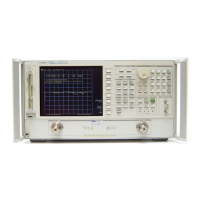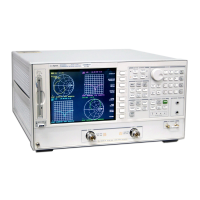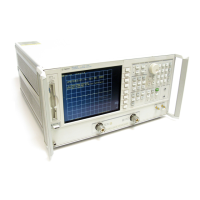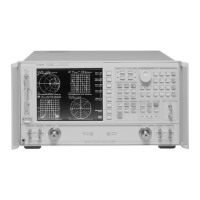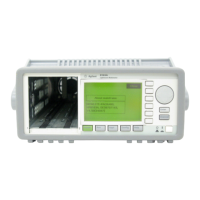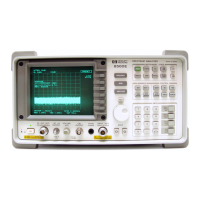3-9
Making Time Domain Measurements
Making Reflection Response Measurements
Making Reflection Response Measurements
The time domain response of a reflection measurement is often compared with the time
domain reflectometry (TDR) measurements. Like the TDR, the analyzer measures the size
of the reflections versus time (or distance). Unlike the TDR, the time domain capability of
the analyzer allows you to choose the frequency range over which you would like to make
the measurement.
1. To choose the measurement parameters, press:
or on ET models:
2. Perform an S
11
1-port correction on PORT 1. Refer to Chapter 5 , "Optimizing
Measurement Results" for a detailed procedure.
3. Connect your device under test as shown in Figure 3-7.
Figure 3-7 Device Connections for Reflection Time Domain Example
Measurement
4. To better view the measurement trace, press:
Figure 3-8 shows the frequency domain reflection response of the cables under test. The
complex ripple pattern is caused by reflections from the adapters interacting with each
other. By transforming this data to the time domain, you can determine the magnitude
of the reflections versus distance along the cable.
Preset
Meas
Start 50 M/µ
Stop 3 G/n
Scale Ref

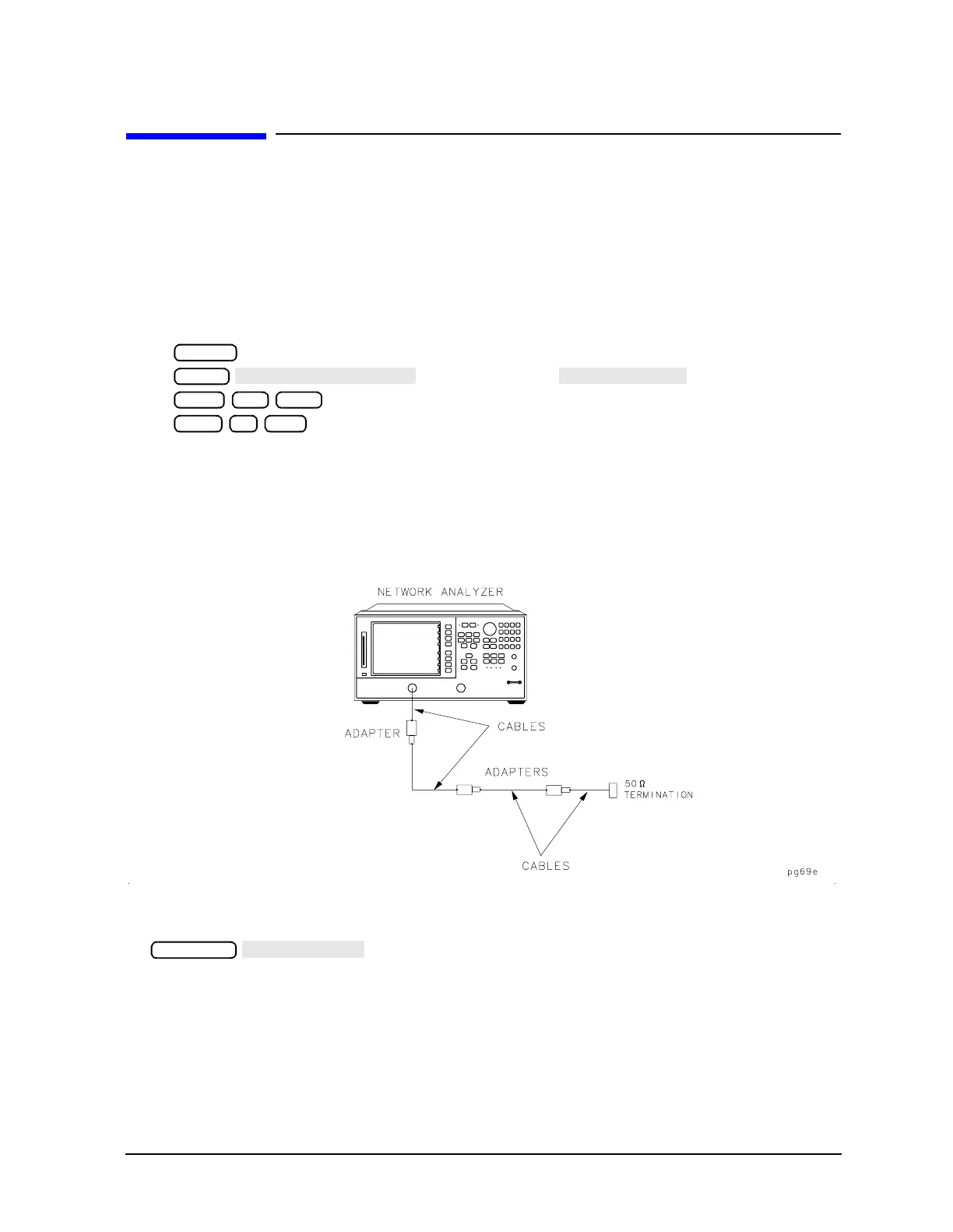